Lingering Garden is also called Liuyuan Garden. Known for stunning architecture, it is the best-preserved gardens in Suzhou City of Jiangsu Province. Together with the Humble Administrator's Garden in Suzhou, the Summer Palace in Beijing and Chengde Mountain Resort, Lingering Garden is one of the four famous gardens in China.
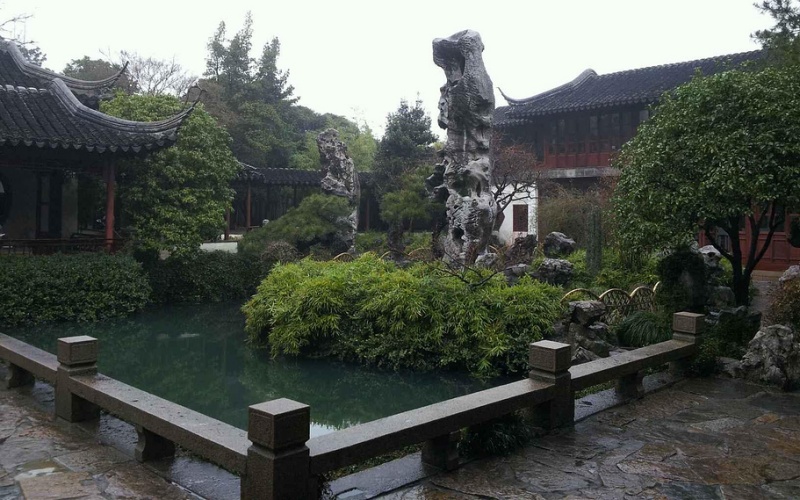
Lingering Garden, covered an area of 23,000 square meters, originally served as a classical private garden, with magnificent halls, various buildings and lush grounds which visitors can enjoy today.
History
With over 400 years history, Lingering Garden has changed hands several times. Situated outside of Changmen Gate, it was first built in 1593 during the Ming Dynasty when a retired official named Xu Taishi commissioned it as his primary residence, with the help of well-known stonemason Zhou Shicheng. At this time it was called East Garden.
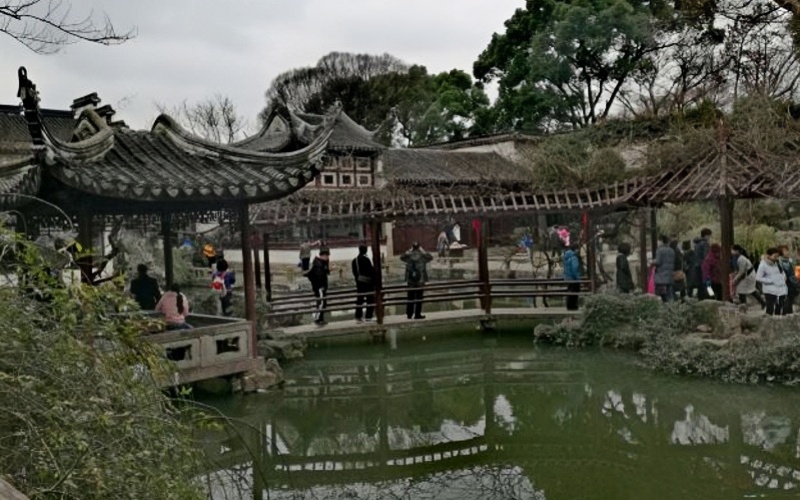
But years later, it was renamed Hanbi Villa — popularly known as Liu Garden — after Liu Shu purchased the property during the Qing Dynasty in 1794. As a lover of calligraphy, he carved masterpieces on both sides of the building's corridors, and also collected stones of unusual shapes in the garden. New owners acquired it in 1873, renaming it Lingering Garden and continuing the previous owner's restoration work.
Though almost demolished in the 1930s, government sponsorship eventually facilitated repairs and it was opened to the public in 1954. Since then, it has remained a popular tourist destination. In 1997, it was designated a UNESCO World Heritage Site.
What To See
Overall, the entire Lingering Garden possesses 42 rooms and halls, 200 lattice windows, 44 parallel couplets and stone carvings, and 373 stelae (upright stone slabs or columns) that are superbly inscribed with calligraphy works.
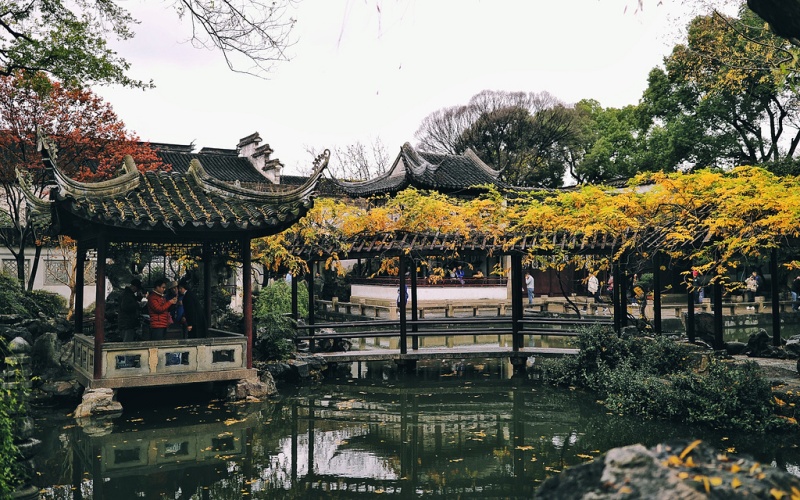
The whole garden is divided into four parts. Tourists can enjoy four types of scenery here: mountains, rivers, fields, forests, and gardens.
The central section is known for its water features (small ponds). Walking around the small pond, you can see pavilions.
Also known as the Lotus Hall, the Hanbi Mountain Villa in the center section of the garden is another important building. Its tall, roomy farmhouse design demonstrates the idea of a rustic retreat and it enjoys picturesque surrounding landscapes and a nearby pool with various kinds of fish.
At the Pellucid Tower, you’ll find a structure built to resemble the form of a pleasure boat launching into the pond. At two and a half stories tall, the tower showcases a uniquely designed mountain path winding upward. Other prominent towers of the central area include the Distant Green Tower, West Tower, Mingse Tower and Quxi Tower.
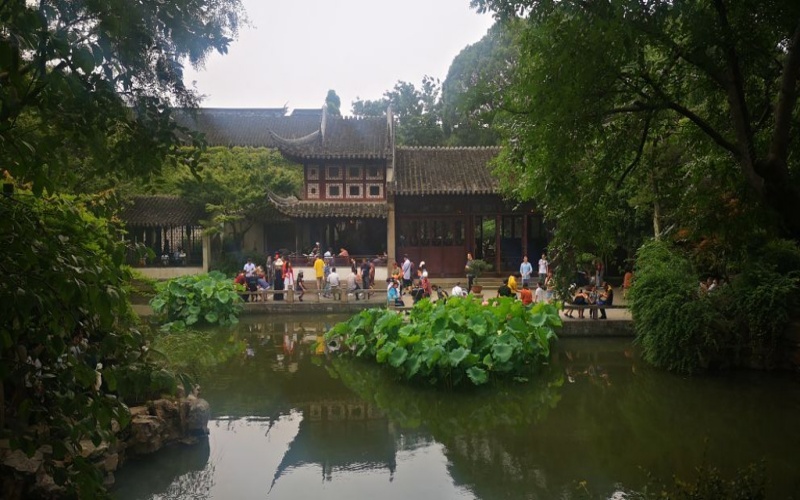
The eastern section is characterized by the architecture of the winding corridors. There are more than ten buildings here. The Guanyun Peak (the Taihu Lake Lake Stone), Nanmu Hall and Fish Fossils, known as the "Three Treasures of Lingering Garden", are all in the east.
Celestial Hall of Five Peaks in the eastern section, a chief structure inspired by a verse from Li Bai. Enter through a dramatic entrance to find interiors outfitted with sturdy beams and pillars made of nanmu, a highly prized Chinese wood. The expansive hall branches out into five rooms decorated with traditional period furnishings. One treasure to be seen is the Fish Fossil, a natural picture on a round piece of marble. In addition to the marble’s patterns resembling a stream surrounded by mountains, cliffs and sky, the bones of more than 20 fish are visible.
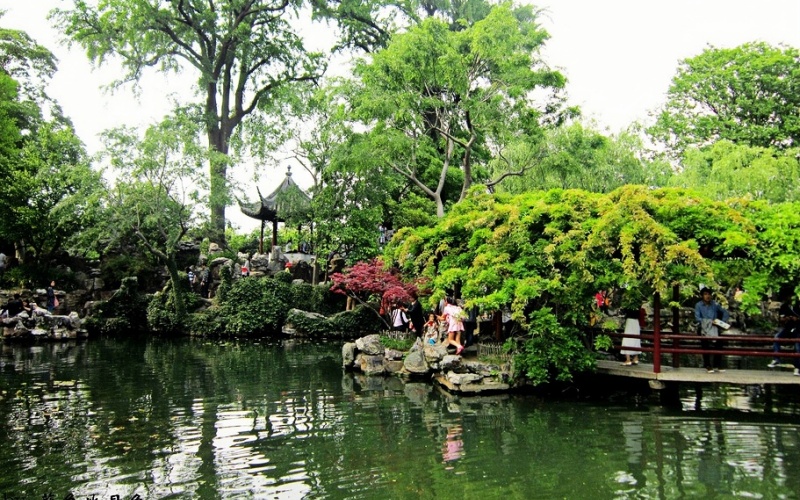
The northern and western parts of Liuyuan are relatively open. The northern region boasts rural scenery and newly developed scenic gardens The western area is the highest point in the entire park, with a wild charm and a unique rockery.
Features
As one of the classical gardens of Suzhou, Lingering Garden was created in typical Qing style, inspired by royal hunting gardens and featuring stunning natural landscapes within limited space. The domiciles, ancestral temples and private gardens blend seamlessly with their surroundings, built under the influence of a poetic freehand style that originated with traditional Chinese landscape paintings. Elegance, craftsmanship and rich cultural implications merge to lend insight into the aesthetics of ancient Chinese intellectuals.
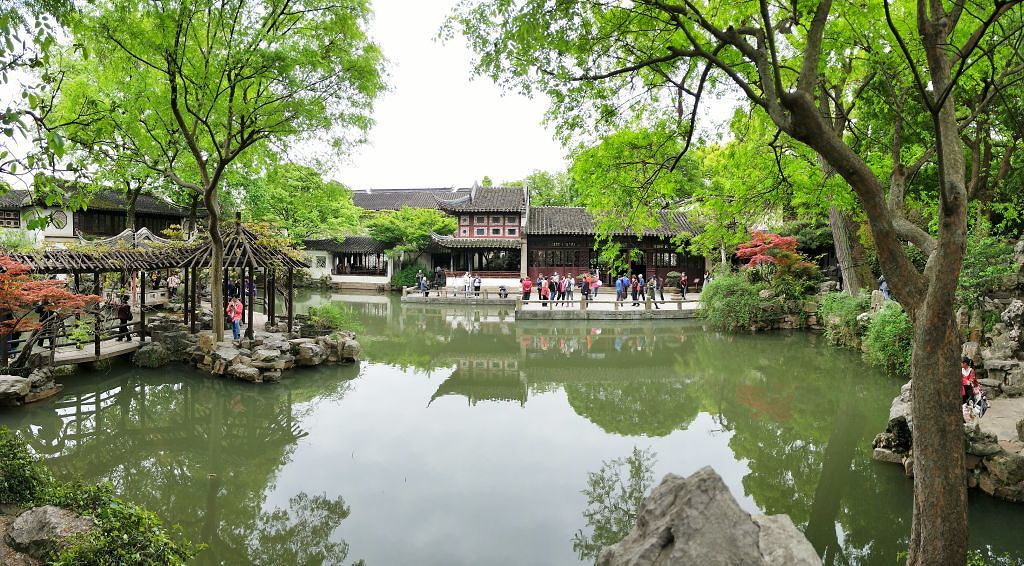
Today, the garden is divided into distinctly themed central, eastern, western and northern parts, all of which are connected by a long, covered corridor bedecked with calligraphy carved into the walls of stone. The ancestral temple and house lie south of the garden. Of the four parts, the central area — which made up the original Lingering Garden — is the heart and soul of the whole complex, while the three others were added later.
The central section features a man-made mountain and lake scenery; the eastern part is noted for groupings of elegant buildings and gardens, including the Celestial Hall of Five Peaks; the western part is characterized by enchanting, woody hills covered with maple trees that turn bright red in autumn; and the northern part, a former vegetable garden, now boasts exhibits of potted plants and bonsai, idyllic scenes and cottages with bamboo fences.
Travel Tips
Add: No. 338, Liuyuan Road in the Gusu District,Suzhou City
Opening Hours: 7:30-17:00
Visiting Time: 1.5 hours visiting
Admission: CNY 55
